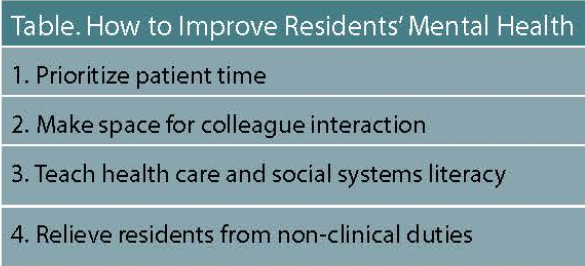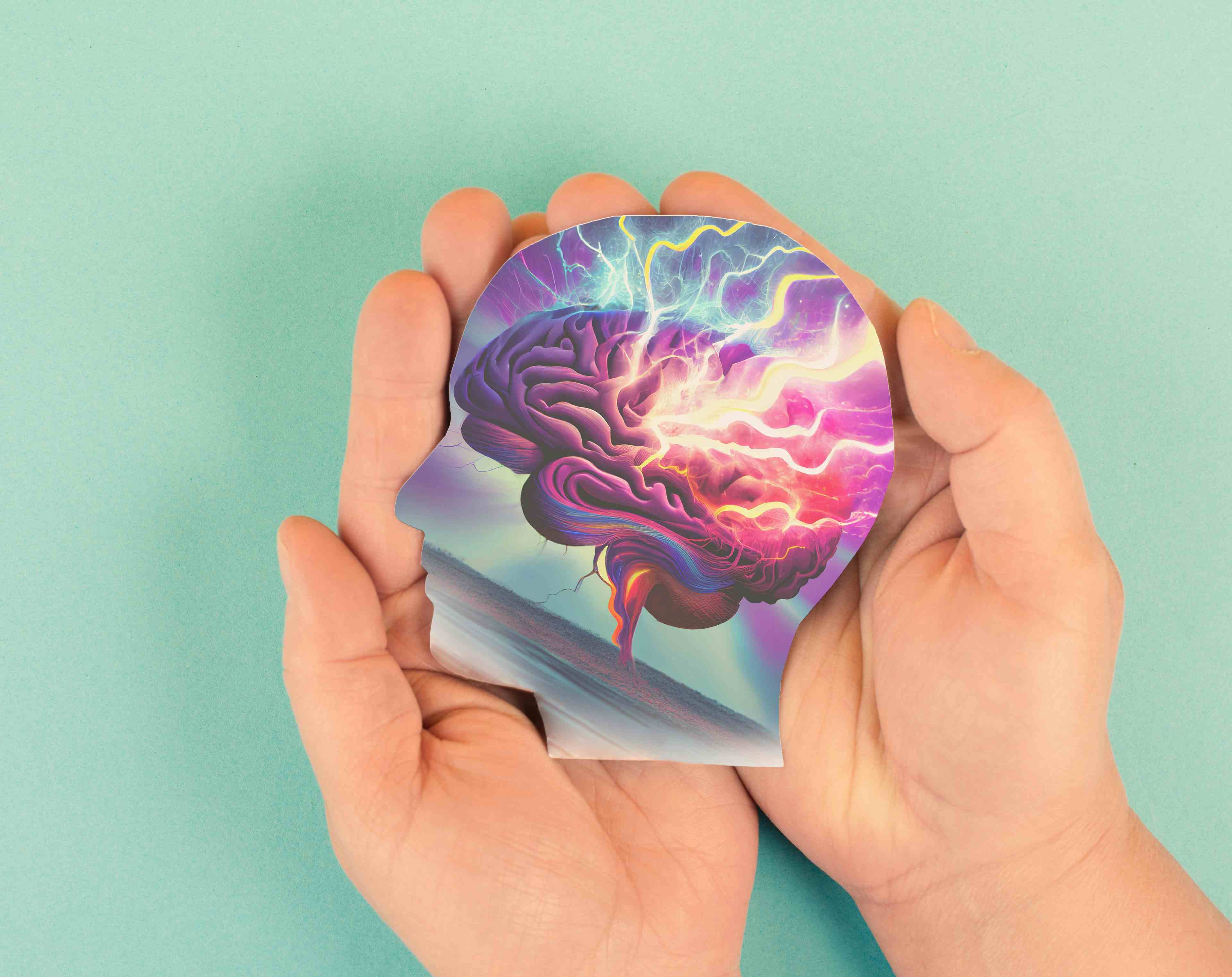Article
Beneath the Wheel: A Resident Reflects on Burnout and Professional Identity
Author(s):
Unable to spend adequate time with patients, residents are not learning to function as doctors, but merely as technicians for the human body.
Davstudio/Adobestock

Looking back on my last 4 years of residency training, I am reminded of an old joke: “A Jewish mother is with her son at the beach after he recently passed his medical licensing exams. He goes for a swim, but suddenly gets pulled under a large wave. Trying to get assistance she shouts, ‘Help, help! My son the doctor is drowning!’” It is the kind of humor that might have resonated with my immigrant grandparents; the joke being that even in the face of his impending doom, the mother feels the need to brag about her son’s professional accomplishments.
The joke may no longer translate as intended, but it is a fitting allegory for the experience of young doctors today, who are publicly applauded, but continue, metaphorically speaking, to drown.
In ideal circumstances, a doctor’s professional identity centers around not only using one’s knowledge of medicine to educate and help individuals who are suffering from illnesses, but also exercising compassion and earning respect through competence, ingenuity, and fortitude. However, the unfortunate reality is that modern medicine is practiced within an increasingly inefficient, dysfunctional, and bureaucratic health care system that limits our ability to live up to this standard. In other words, the problem we are facing in residency is that medicine has changed, but medical training has not.
Early Warning Signs
I was actually warned about the growing mental health crisis among doctors in training 3 years ago on my first day of hospital orientation when the director of our house staff mental health service told us the facts bluntly. About half of us would develop burnout during our residency training, and a quarter would develop clinical depression, a rate that has been estimated by the American Foundation for Suicide Prevention to be 3 to 4 times that of similarly aged peers in other professions.1,2 Because many of us would be repeatedly exposed to medical emergencies and traumatic stress, we would be more likely to develop PTSD as well.3,4 Most alarming, we would be at increased risk of suicide. One study from JAMA Psychiatry found that 23% of first year residents had had suicidal thoughts during the previous year.5 Suicide is the second leading cause of death among residents, and the leading cause among male residents.6
These are not mere statistics. I am now in my final year of residency training in psychiatry, and every year since that orientation lecture, in what has become a disturbingly routine ritual, I have gathered informally with my department after learning of a colleague’s suicide.
Overtraining and Overwork
It is impossible to discuss the current burnout and mental health crisis among residents without considering the historically demanding nature of residency training. Equal parts training program and hazing ritual, residency is a modern, systematized form of apprenticeship; it is a rite of passage that initiates young doctors into the practice of medicine. Formal residency programs have been in place in the United States for more than 100 years, and their central guiding principles have remained much the same. In exchange for training and education, we provide inexpensive labor for hospitals. We work most of our waking hours and are paid only about $12 an hour for an 80-hour week, even though nearly half of us owe more than $200,000 in educational debt.7
There have been important regulations put in place to improve residents’ working conditions, mostly as a result of patient tragedies. An example is the death of Libby Zion in 1984, which led to the passage of a 1989 New York law restricting resident work hours to 80 hours per week. Unfortunately, the recommendations were not adopted nationwide until 2003. Meanwhile, in 2017 the Accreditation Council for Graduate Medical Education (ACGME), which oversees residency training, raised maximum number of hours an intern can work consecutively from 16 to 24. Unsurprisingly, many of these protections have been difficult to maintain in recent months. Residents have been asked to take on the lion’s share of additional work, often in capacities outside their area of training and specialization, during the coronavirus 2019 pandemic.
More senior doctors will rightfully point out that residency training has always been demanding and, in some ways, exploitative. But even if overwork contributes to resident burnout, depression, and suicide, it cannot explain why the problem seems to be growing. In recent years, numerous academic studies have sought to characterize the problem of burnout more specifically, investigating risk factors, rates across medical specialties, and its negative impact on patients.8-11 Medicine is not the only profession that involves rigorous training, long hours, and a stressful work environment. Moreover, we enter residency with foreknowledge of its difficulty and having already demonstrated their ability and dedication to endure it. In fact, physicians actually score higher on resilience scales than individuals in other professions, suggesting that physician burnout occurs in spite of the protective effects of resilience.12 My sense is that the current resident burnout is not merely one of overwork and insufficient attention on resident wellness, although these undoubtedly contribute, but rather due to a professional identity crisis.
The Doctor Will Not See You Now
Even before the coronavirus pandemic began, today’s hospitals were vastly different from the ones our teachers and mentors staffed when they were residents a generation ago. With improved medical knowledge and treatment over the last half-century, patients now can receive care in ambulatory (and even virtual) settings and survive conditions that would have likely been lethal a few decades ago. As a result, residency training, which remains predominantly hospital-based, involves caring for ever-sicker and more complex patients. The number of organ transplants, for example, has doubled in the last 3 decades, as has the number of intensive care unit beds, even as the number of hospitals has decreased across the country.13,14 Sicker patients have more medical emergencies, and over the last 10 years, the rates of cardiac arrest in hospitalized adult patients has increased by more than 20%.15 Due to a combination of improved treatment and increased pressure to reduce health care costs, today’s patients spend roughly half as many days in the hospital per admission compared with that in the 1970s.16,17 As a result, in addition to managing more complicated and stressful clinical situations, residents contend with more rapid patient turnover and increased administrative burden than ever before.18
Young doctors may have entered medicine to care compassionately for patients, but they end up with woefully insufficient time to spend with them. Contrary to the popular image of the young, white-coated physician intently examining a patient with a stethoscope, residents actually spend most of their time in cramped workrooms managing patients’ care from behind a computer. In recent studies at Stanford University and Columbia University, residents in their first 2 years of training spent almost half their working hours at computers, using the electronic medical record to gather information and write notes, and less than 10% of their day with patients.19,20 As an intern working in internal medicine, the 5 to 10 minutes a day I had with each patient was sometimes more than that of the more senior residents on my team, who did not always have time to even meet the patients.
Even before the COVID-19 pandemic, which has accelerated this trend by forcing residents to minimize all face-to-face interactions with patients, pressing time constraints required residents to spend only enough time with patients to obtain necessary information, a dissatisfying experience for doctor and patient alike. We also save time talking about patients by describing them primarily in terms of their basic demographics, diagnoses, and test results, a dehumanizing characterization that can make it difficult to see patients as actual individuals. The breakdown of the doctor-patient relationship presents an existential threat to resident professional identity, especially now, when patient interactions occur behind the impersonal veil of fogged face shields and voice muffling N95 masks. If we are unable to spend meaningful time with patients, we are not learning to function as doctors, but merely as technicians for the human body.
While the combination of punishingly long work hours and limited time with patients may be demoralizing for residents, it is potentially disastrous for patients. My colleagues acknowledge that, as a result of feeling overwhelmed, they have made mistakes impacting patient care and wasting resources, such as requesting redundant laboratory tests, requiring an additional blood draw, or accidentally ordering an expensive imaging study on the wrong patient. When I did nightshifts as an intern, I cared for up to 40 sick patients each night and was exhausted—somewhat delirious from sleep deprivation—and focused on trying to keep track of which emergency I needed to respond to first. Occasionally I would be notified of a patient’s request for pain medication, and despite my best efforts, would sometimes be too busy to respond promptly, or worse, might even forget. Experiences like these are not tracked by the ACGME when looking for links between resident exhaustion and clinical errors, as any resident will shrug and tell you that “it happens every day.” But ask anyone who has been a patient in a hospital, and they will tell you about a time they suffered while waiting for the help of a doctor who they did not even know.
Treating Social Ills—Without the Necessary Training
Another way in which hospitals have changed is that they increasingly care for the most vulnerable individuals in our society, those who cannot receive assistance anywhere else.21 Residents must not only treat the immediate medical problem at hand, but also address the social determinants of patient health, including poverty, violence, exposure to the criminal justice system, systemic racism, illiteracy, immigration trauma, and homelessness. We enter residency training to become doctors, but we are asked to function as part of the social safety net, an impossible task that often leaves us feeling helpless, exhausted, and overextended.
I had this very experience when I spent a month working on an inpatient HIV service. Although patients with HIV can lead healthy lives thanks to anti-retrovirals, the patients in this unit were gravely ill with severe complications, primarily because their lives were too unstable and chaotic to stay regularly engaged in treatment. Despite no formal training in social work, we spent hours each day in interdisciplinary meetings strategizing the provision of services to support patient well-being, like housing, nursing services, financial support, and psychological counseling. These patients needed assistance in almost every aspect of their lives, far more than we could accomplish during a short hospital stay.
In extreme cases known informally as social admissions, patients are hospitalized because they cannot be safely discharged due to the absence of sufficient support or care at home—not because of medical necessity. Throughout residency, I have encountered patients on nearly every hospital service who have remained hospitalized for months, even years, without an acute medical issue, simply because they were awaiting a safe discharge plan. I dreaded waking these patients on my early morning rounds, ashamed of how little we could do on their behalf and frustrated by how seemingly irrelevant my medical training was to their care.
A Bureaucratic Nightmare
Another dispiriting change in residency is a result of health care systems’ goals to become more efficient and standardized. As a result, residents are often constrained by hospital bureaucracy. A close friend of mine training in neurosurgery routinely works 100-hour work weeks caring for critically ill and dying patients. The worst part of residency, he shared, is the round-the-clock nonurgent patient updates, nonclinical requests and digital notifications, often triggered automatically by electronic record systems. Every resident knows what it is like to be startled awake in the middle of the night by seemingly pointless notifications, a slightly higher than normal blood pressure reading, or a request to renew a routine order that has been in place for days. I was once sent an urgent notification to change the order for a patient’s protein drink from chocolate to vanilla. My friend explains, “Someone on the outside might think it’s annoying and not a big deal, but multiply over years and countless hours of lost sleep…it’s like psychological torture.”
What Is to Be Done?
Changes in modern medicine that burden house staff continue to affect doctors when they become attending physicians. In fact, attending physicians and residents have similarly alarming rates of depression and suicide,22 and this problem may be even more challenging to address since attendings lack the centralized oversight of training programs. While addressing the deeper systemic issues in American health care that undermine physician professional identity will ultimately require a radical reevaluation and overhaul of the American medical system, there is good news: medical schools, residency programs, and hospitals can still take steps now to help residents by cultivating and preserving their emerging sense of professional identity (Table). The first priority should be to protect residents’ time with patients, whether virtually or in person. Interpersonal skills are critical for fostering effective doctor-patient interactions and should be prioritized in training alongside other technical skills. Just as hospital-based residents spend the early part of their day in rounds that provide time for teaching and discussion, residents should have time built into the later part of their day to spend time with patients, reassessing their needs, providing education, and getting to know them as individuals. I kept sane in my intern year despite the 70- to 90-hour workweeks by managing to find a half hour at the end of the day to circle back to a patient. I would sit at their bedside, so they could introduce me to their spouse or show me a cherished picture of a vacation or wedding. Hospitals can be difficult places to feel human, both as a patient and as a doctor, and moments like these helped me feel like the work I was doing mattered.
Residents also need protected time with each other. Residency is life-changing in a way friends and family may not fully understand, and residents need time to process their experience with their colleagues and consolidate their emerging professional identity. Ideally, to facilitate trust and honest disclosure, such process groups should be small, consistent, and run on a weekly basis without the involvement of program administration or leadership. Furthermore, if a resident does need additional mental health treatment, hospitals should ensure that they have protected time for such. It is not sufficient or reasonable to simply refer residents to external mental health resources and ask them to address their mental well-being on their own time.
Young doctors need to be educated during medical school and residency about health care and social systems, so as to better function within an interdisciplinary health care team. Just as medical students learn about anatomy and physiology, they also need basic information about hospital payment structures, insurance reimbursement, and social systems such as public housing, homeless shelters, criminal justice, child protective services, and geriatric long-term care. Without an understanding of how their work fits into a broader social and health system, residents cannot advocate on their patients’ behalf. Similarly, residents’ day-to-day experience should facilitate direct and close collaboration with non-physician team members, including nurses, social works, and case managers.
Finally, doctors in training should be spending as much of their time as possible being doctors. Using residents as underpaid labor to perform tasks better suited to administrators, nurses, social workers, and other members of the health care team is not only inefficient, but it interferes with resident training and devalues their professional identity. Hiring additional staff would require additional hospital spending, but it would dramatically improve productivity and well-being.
Unfortunately, residents are not in a strong position to promote these changes themselves, especially ones that would involve reducing resident workloads. Hospitals have little incentive to make the financial commitment necessary to improve resident work conditions, especially since they have been primarily paying for resident salaries since the 1960s with set funds from Medicare and Medicaid. Moreover, overworked residents do not have time to organize and advocate for necessary reforms, nor do they have sufficient bargaining power to do so, as they are dependent on their residency programs for their future careers in medicine. Unsurprisingly, although residents have the legal right to unionize, only about 10% of them do so. However, residents are not the only individuals negatively impacted by the current burnout crisis. Patients also deserve higher quality and more personalized care from the residents who treat them. They, too, can lobby for increased access to their doctors by advocating for changes in how residencies are funded and structured.
Even with these changes, residency will still be demanding and difficult, just as it has been since its inception. To build expertise and navigate the high-stakes and emotionally intense situations that are intrinsic to the practice of medicine, it is necessary to see large numbers of patients. Neither I nor my colleagues are looking to do less work, but we want to be allowed to direct our efforts in service of our professional mission: to become the physicians we envisioned when we started this transformative journey.
Dr Mendelsohn is a fourth-year psychiatry resident at Columbia University Medical Center
References:
1. Mata DA, Ramos MA, Bansal N, et al. Prevalence of depression and depressive symptoms among resident physicians: a systematic review and meta-analysis. JAMA. 2015;314(22):2373-83.
2. Rotenstein LS, Torre M, Ramos MA, et al. Prevalence of burnout among physicians: a systematic review. JAMA. 2018;320(11):1131-1150.
3. Kannan L, Wheeler DS, Blumhof S, et al. Work related post traumatic stress disorder in medicine residents. Acad Psychiatry. 2019;43(2):167-170.
4. Jackson T, Provencio A, Bentley-Kumar K, et al. PTSD and surgical residents: everybody hurts… sometimes. Am J Surg. 2017;214(6):1118-1124.
5. Guille C, Zhao Z, Krystal J, et al. Web-based cognitive behavioral therapy intervention for the prevention of suicidal ideation in medical interns: a randomized clinical trial. JAMA Psychiatry. 2015;72(12):1192-8.
6. Yaghmour NA, Brigham TP, Richter T, et al. Causes of death of residents in ACGME-accredited programs 2000 through 2014: implications for the learning environment. Acad Med. 2017;92(7):976-983.
7. Martin, KL. Medscape Residents Salary & Debt Report 2019. July 17, 2019. Medscape. Accessed January 27, 2021. https://www.medscape.com/slideshow/2019-residents-salary-debt-report-6011735
8. Chaukos D, Chad-Friedman E, Mehta DH, et al. Risk and resilience factors associated with resident burnout. Acad Psychiatry. 2017;41(2):189-194.
9. Martini S, Arfken CL, Churchill A, Balon R. Burnout comparison among residents in different medical specialties. Acad Psychiatry. 2004;28(3):240-2.
10. Dewa CS, Loong D, Bonato S, et al. The relationship between resident burnout and safety-related and acceptability-related quality of healthcare: a systematic literature review. BMC Med Educ. 2017;17(1):195
11. Dyrbye LN, Burke SE, Hardeman RR, et al. Association of clinical specialty with symptoms of burnout and career choice regret among US resident physicians. JAMA. 2018;320(11):1114-1130.
12. West CP, Dyrbye LN, Sinsky C, et al. Resilience and burnout among physicians and the general US working population. JAMA Netw Open. 2020;3(7):e209385. Published 2020 Jul 1.
13. Health and Human Resources & Services Administration. Organ donation statistics. Accessed January 27, 2021. https://www.organdonor.gov/statistics-stories/statistics.html
14. Wallace DJ, Seymour CW, Kahn JM. Hospital-level changes in adult ICU bed supply in the United States. Crit Care Med. 2017;45(1):e67-e76.
15. Holmberg MJ, Ross CE, Fitzmaurice GM, et al. Annual incidence of adult and pediatric in-hospital cardiac arrest in the United States. Circ Cardiovasc Qual Outcomes. 2019;12(7):e005580.
16. DeFrances CJ, Hall MJ. 2005 National Hospital Discharge Survey. Adv Data. 2007;(385):1-19.
17. Kominski GF, Witsberger C. Trends in length of stay for Medicare patients: 1979-87. Health Care Financ Rev. 1993;15(2):121-35.
18. Clark AV, Lopresti CM, Smith TI. Trends in inpatient admission comorbidity and electronic health data: implications for resident workload intensity. J Hosp Med. 2018;13(8):570-572.
19. Wang JK, Ouyang D, Hom J, Chi J, Chen JH. Characterizing electronic health record usage patterns of inpatient medicine residents using event log data. PLoS One. 2019;14(2):e0205379.
20. Mamykina L, Vawdrey DK, Hripcsak G. How do residents spend their shift time? A time and motion study with a particular focus on the use of computers. Acad Med. 2016;91(6):827-32.
21. Health Resources and Educational Trust. Social determinants of health series: housing and the role of hospitals. August 2017. Accessed January 27, 2021. https://www.aha.org/system/files/hpoe/Reports-HPOE/2017/housing-role-of-hospitals.pdf
22. Schernhammer ES, Colditz GA. Suicide rates among physicians: a quantitative and gender assessment (meta-analysis). Am J Psychiatry. 2004;161(12):2295-302.

















